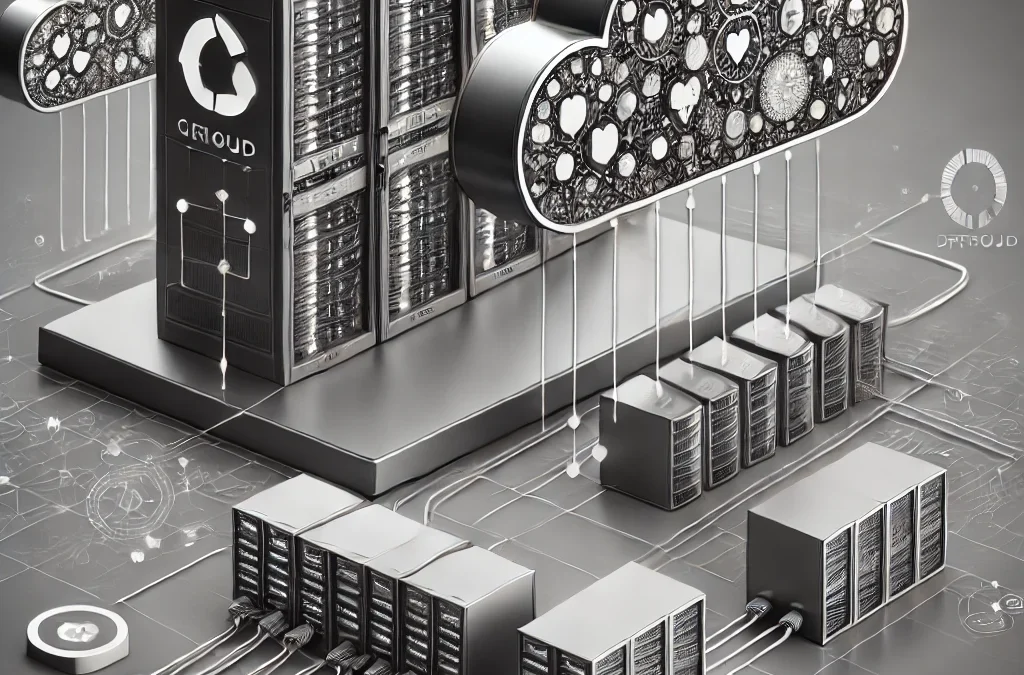Introduction
Is hybrid cloud architecture the dream match for modern enterprises, or is it the tech equivalent of a chaotic wedding? With businesses constantly juggling the need for scalability, cost-efficiency, and security, hybrid cloud solutions have emerged as a promising middle ground. But let’s face it: blending on-premise and cloud environments isn’t always as seamless as it sounds.
Let’s dive deep into the pros, cons, and best practices to determine whether hybrid cloud truly deserves the hype or is just an expensive recipe for operational headaches.
What is Hybrid Cloud?
Think of the hybrid cloud as a buffet: you get the best of both worlds – the security and control of on-premise systems and the flexibility of public cloud platforms like AWS, Azure, or Google Cloud. But instead of overeating (or overspending), you should pick exactly what you need, balancing resources and optimizing workloads.
Core Components of Hybrid Cloud:
- On-Premise Infrastructure: Servers, storage, and network systems are managed internally.
- Public Cloud Services: Scalable resources provided by third-party vendors.
- Orchestration Tools: Middleware that ensures seamless interaction between on-premise and cloud environments.
The Sweet Side: Benefits of Hybrid Cloud
1. Scalability Without Breaking the Bank
A hybrid cloud lets enterprises scale workloads to the cloud during peak demand while maintaining core operations on-premise. Need extra computing power for that big quarterly report? Scale it to the cloud and pay only for what you use.
2. Enhanced Flexibility
Why choose one when you can have both? A hybrid cloud allows businesses to run legacy applications on-premise while leveraging advanced analytics or AI workloads in the cloud.
3. Business Continuity and Disaster Recovery
Nobody likes downtime. By splitting operations across on-premise and cloud, hybrid setups ensure data redundancy and faster recovery times in case of disasters.
4. Regulatory Compliance
For industries dealing with sensitive data, the hybrid cloud provides a haven. Keep sensitive workloads on-premise while using the cloud for less critical operations.
The Sour Side: Challenges of Hybrid Cloud
1. Complexity Overload
Managing hybrid environments can feel like juggling chainsaws. Complexity is a constant headache between syncing databases, securing multiple endpoints, and troubleshooting network issues.
2. Security Risks
More moving parts mean more vulnerabilities. A misconfigured API or outdated on-premise firewall could open doors for cyberattacks.
3. Hidden Costs
Hybrid might seem cost-effective on paper, but hidden costs like data transfer fees, orchestration tools, and maintenance can blow your budget.
4. Performance Bottlenecks
Latency issues can arise when workloads frequently shift between on-premise and cloud environments. Poor orchestration might leave your applications running at half-speed.
Best Practices for a Harmonious Hybrid Cloud
1. Define Clear Workload Boundaries
Identify which workloads are better suited for on-premise systems versus the cloud. Sensitive financial data? Keep it on-premise. Need AI-powered insights? Offload to the cloud.
2. Invest in Orchestration Tools
Platforms like Kubernetes or VMware’s hybrid solutions can simplify workload balancing and resource allocation.
3. Prioritize Security
Adopt a zero-trust security model to protect your hybrid environment. Regularly update your firewalls, encrypt data, and monitor endpoints.
4. Monitor Costs Like a Hawk
Use cloud cost management tools like FinOps to track spending and optimize resource usage. Ensure your team isn’t overprovisioning on-premise resources while underutilizing the cloud.
5. Train Your Teams
Your IT team needs to master both on-premise and cloud systems. Continuous training ensures they’re ready to tackle hybrid challenges head-on.
Real-World Example: The Netflix Approach
Netflix relies heavily on a hybrid cloud strategy. While its streaming services use public cloud resources for scalability, sensitive data, and critical operations remain under strict control. This blend ensures reliability during peak traffic (like Stranger Things premieres) while safeguarding user data.
So, Is Hybrid Cloud the Perfect Marriage?
The answer depends on how well you manage it. For enterprises that invest in proper planning, orchestration, and security, the hybrid cloud can be the tech equivalent of “happily ever after.” But without these, you might find yourself in a messy divorce with skyrocketing costs and performance issues.
Final Thoughts
A hybrid cloud isn’t a one-size-fits-all solution, but it’s undoubtedly a game-changer for businesses willing to embrace its complexity. So, are you ready to tie the knot with hybrid cloud, or will you swipe left?

